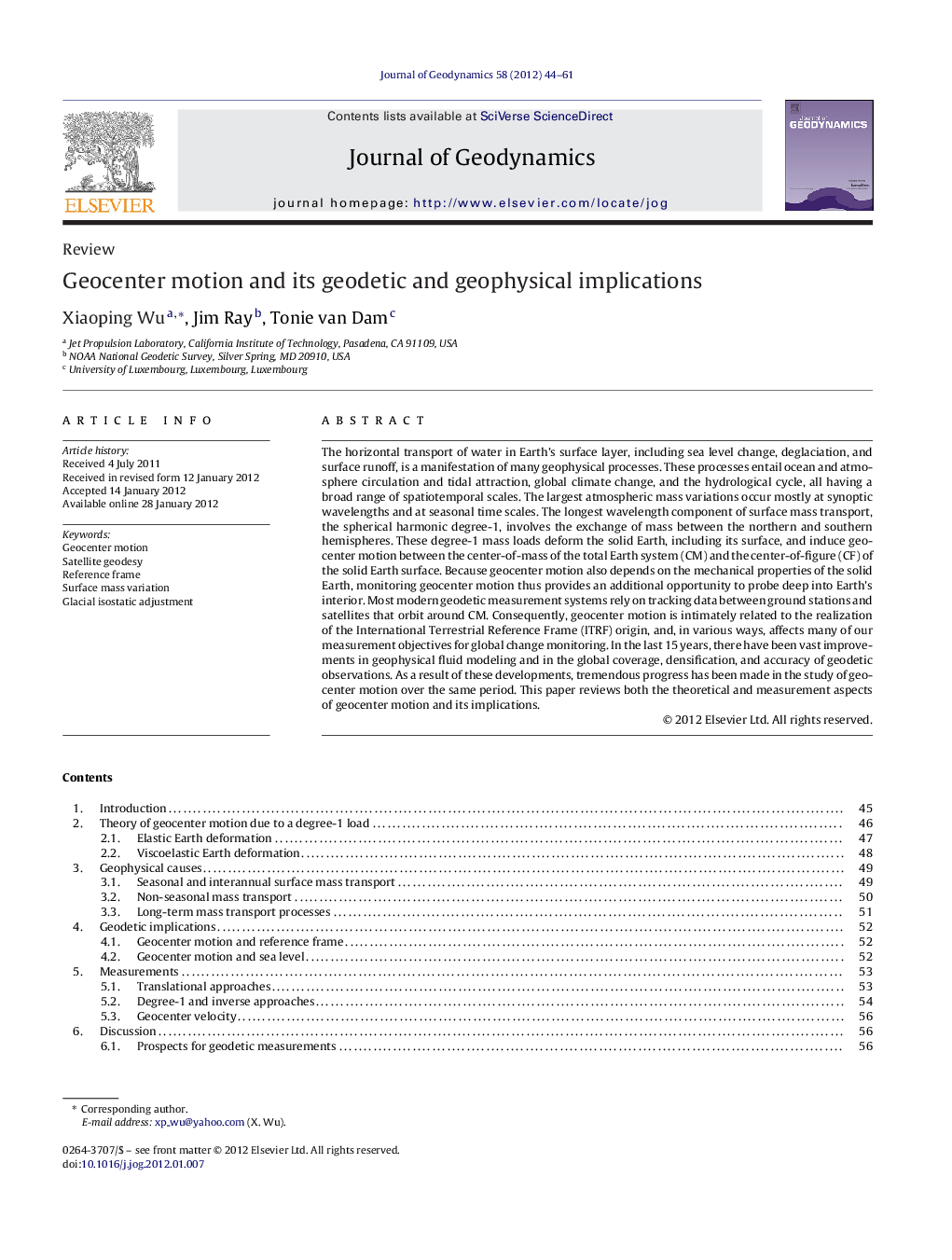| Article ID | Journal | Published Year | Pages | File Type |
|---|---|---|---|---|
| 4688346 | Journal of Geodynamics | 2012 | 18 Pages |
The horizontal transport of water in Earth's surface layer, including sea level change, deglaciation, and surface runoff, is a manifestation of many geophysical processes. These processes entail ocean and atmosphere circulation and tidal attraction, global climate change, and the hydrological cycle, all having a broad range of spatiotemporal scales. The largest atmospheric mass variations occur mostly at synoptic wavelengths and at seasonal time scales. The longest wavelength component of surface mass transport, the spherical harmonic degree-1, involves the exchange of mass between the northern and southern hemispheres. These degree-1 mass loads deform the solid Earth, including its surface, and induce geocenter motion between the center-of-mass of the total Earth system (CM) and the center-of-figure (CF) of the solid Earth surface. Because geocenter motion also depends on the mechanical properties of the solid Earth, monitoring geocenter motion thus provides an additional opportunity to probe deep into Earth's interior. Most modern geodetic measurement systems rely on tracking data between ground stations and satellites that orbit around CM. Consequently, geocenter motion is intimately related to the realization of the International Terrestrial Reference Frame (ITRF) origin, and, in various ways, affects many of our measurement objectives for global change monitoring. In the last 15 years, there have been vast improvements in geophysical fluid modeling and in the global coverage, densification, and accuracy of geodetic observations. As a result of these developments, tremendous progress has been made in the study of geocenter motion over the same period. This paper reviews both the theoretical and measurement aspects of geocenter motion and its implications.
